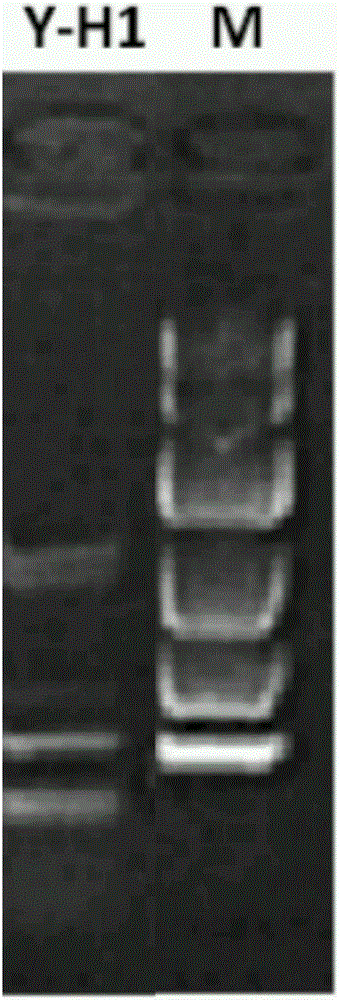Parallel-connection probes, gene chip, kit and method for HSV (herpes simplex virus) type I detection
A herpes simplex virus and detection gene chip technology, applied in the field of molecular biology, can solve the problems of low sensitivity, false positives, poor specificity, etc., and achieve simple detection operation, high specificity, and improved accuracy and precision Effect
- Summary
- Abstract
- Description
- Claims
- Application Information
AI Technical Summary
Problems solved by technology
Method used
Image
Examples
Embodiment 1
[0025] Example 1 Target Fragment Primer and Probe Design
[0026] Look up the gene sequence of herpes simplex virus type I in the NCBI database, select a highly specific gene sequence as the target sequence (ID number: JQ352183.1), and design primers and probes. After the target sequence is determined, according to the design principles of primers and probes, the amplification primers and probes of the target gene of HSV type I are designed. In order to make the chip results can be directly read by naked eyes after being developed with the chromogenic solution, in the herpes simplex virus The 5' end of the R primer of the type I target gene amplification primer is labeled with biotin, and the specific sequence is as follows:
[0027] HSV I target sequence amplification primers:
[0028] F primer (HSV I-F): 5'-ACCCGCACCATCTACGACGG-3' (SEQ ID NO.4),
[0029] R primer (HSV I-R): 5'-biotin-ACCCCACTTC CGGGTTTCAC-3' (SEQ ID NO.5).
[0030] HSV I parallel probe:
[0031] HSV I pr...
Embodiment 2
[0037] The preparation of embodiment 2 chip
[0038] The parallel probe of HSV I among the embodiment 1 is spotted on the glass substrate of amino modification according to the order of table 1, obtains the gene chip that contains probe (such as figure 1 shown). The probe concentration was 30 μM, 0.2 μL per spot, and then incubated at 80° C. for 1.5 hours.
[0039] Table 1 Arrangement sequence of herpes simplex virus type I detection chip probes
[0040]
Embodiment 3
[0041] Embodiment 3 detection method
[0042] 1. Genome extraction of samples to be tested
[0043] Use the virus genome DNA / RNA co-extraction kit and follow the steps in the operation manual to extract the genome of the sample to be tested as the amplification template.
[0044] 2. PCR amplification of the target fragment
[0045] After a large number of experimental explorations, the target gene PCR amplification system and PCR reaction program for HSV I detection were determined.
[0046] The PCR amplification system with a total volume of 10 μL contains the following reagents:
[0047] name
Amount added
Premix Taq
5μL
F primer (10 μM)
0.2 μL
R primer (10 μM)
0.2 μL
amplified template
0.4μL
double distilled water
4.2 μL
[0048] The PCR reaction program was: 95°C for 5 minutes; 95°C for 10s, 55°C for 30s, 72°C for 30s, 30 cycles; 72°C for 10min.
[0049] 3. Hybridization of PCR products with chips ...
PUM
 Login to View More
Login to View More Abstract
Description
Claims
Application Information
 Login to View More
Login to View More - R&D
- Intellectual Property
- Life Sciences
- Materials
- Tech Scout
- Unparalleled Data Quality
- Higher Quality Content
- 60% Fewer Hallucinations
Browse by: Latest US Patents, China's latest patents, Technical Efficacy Thesaurus, Application Domain, Technology Topic, Popular Technical Reports.
© 2025 PatSnap. All rights reserved.Legal|Privacy policy|Modern Slavery Act Transparency Statement|Sitemap|About US| Contact US: help@patsnap.com



